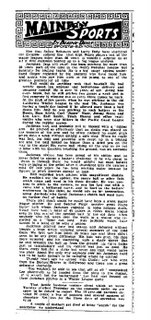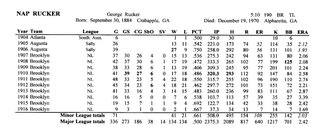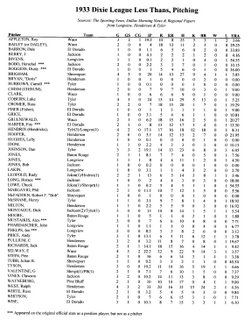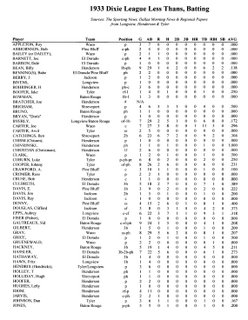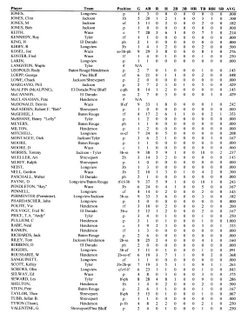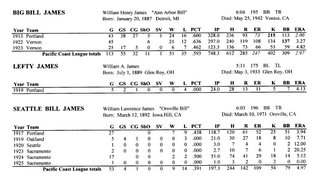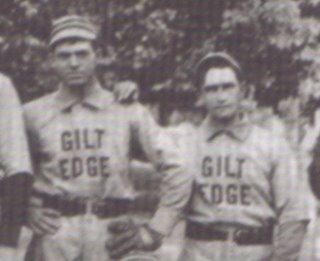Independent Baseball in the 1920s, Part Two
Salaries shot up overnight for the average to above average player, and it got so bad that in 1924 (as I remember, but it could be 1923)
The Sporting News had an article where they quoted Baseball Commissioner Judge Landis expressing his doubts about the survival of major league baseball because teams MLB teams might not be able to compete against real industrial giants for the services of ball players. The implication being that Baseball Magnates were but small business men being forced out of business by the Wal-Marts of the day.
This whole independent-industrial teams phenomena began, as far as I can tell, about the mid-teens. Apparently, companies decided to incorporate athletics into their industrial relations programs, both for keeping their workers fit and keep their minds off dwelling about their lot in life. These companies were more often than not in smaller cities, where diversions were less prevalent; e.g., Beloit, Akron, Kenosha, Racine, Canton, Bethlehem, PA, and so on. To attract workers from the big cities, these companies needed some type of athletic pastimes.
Gradually, these teams became symbols of pride for both management and the workers, representing both the town and the company of these one-company towns. Real rivalries sprang up between neighboring towns, and rival companies. Firms sensed this added dimension, and began importing a ringer or two.
In the case of Beloit, the company imported Al Chubb from the Chicago City League to set up its athletic program. Over time, he brought in players from Chicago. The real quantum leap in the quality of players began, however, in the war-shortened season of 1918. General Crowder's work or fight order made ballplayers scramble to find jobs in what was called "vital industries" as quickly as students in the 60s applied to graduate school. The shipbuilder and steelmakers' leagues on both coasts that season had probably the highest ball ever played outside of the majors. The Harlan team of Wilmington, Delaware boasted the services of Rogers Hornsby, Joe Jackson, Patsy Gharrity and Lefty Williams to name only the ones I remember from the Harlan roster. Other teams in the league boasted rosters only a tad below that. Buck Weaver wound up with his buddy Al Chubb in Beloit, along with Dickie Kerr. (Chubb wanted to sign Weaver after the Black Sox scandal broke, but the other league people passed a no-dumper provision, even though the league employed Bill Rumler who had been suspended from the Coast League for five years for his part in the 1920 gambling scandal.)
Management saw the effect of their workers being represented on the field by the likes of well-known ballplayers. There was virtually no talk of strikes in some plants, and talk of the team was everywhere. Management knew they wouldn't be able to pay the salaries of the Babe Ruths or other stars, but they realized they could sign virtually any of the other regulars, and many of the better— though not best— pitchers. And management eventually got a case of George Steinbrenneritis.
To illustrate management's commitment to the teams they organized, let me quote an article about the coming season from the
Beloit Daily News of April 5, 1923 under the headline of Fairy Pitchers Leave for South: "Beloit Fairy pitchers— Vaughn, Cashion, Noyes, Zabel, Kemman— leave Beloit today, April 5- for Hot Springs, Ark., where they will take a week-long conditioning drill before being joined by the remainder of the factory squad, due to leave for the southland April 11. Manager Chubb will accompany the pitchers to Hot Springs, and will be on hand to pray for less rain at that resort than has been the portion of the Pittsburgh Pirates and the Boston Red Sox-- which clubs have been wallowing through three weeks of soggy weather there."
Spring training, huh? And yes, the Vaughn is Hippo, and, yes, the Davenport is Dave, and, yes, the Noyes is Win, and yes, the Zabel is Zip, yes, yes. Apart from a good salary and easy life of four games a week, they were offered the possibility an occupation after they their careers ended, if they so chose.
This escalated until about the mid-1920s, when the bean counters got control of the operations and began to reign in the excesses in athletic programs.
Nevertheless, some of these industrial teams lasted up until the 1960s, with names I can remember like the Phillips 66 Oilers in basketball. (That's not to mention the Chicago American Gears, the Zollner Pistons, and others.)
The Sheboygan Redskins were a continuation of the Sheboygan Chair Company basketball team; the baseball team wound up in O. B. under the guidance of Joe Hauser in 1939.
The Fairbanks-Morse Basketball team lasted at least up until the early 1960s, and maybe into the 1970s.
